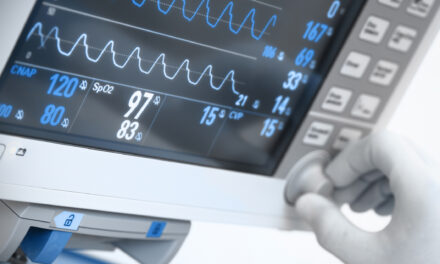The shortage of critical personal protective equipment (PPE) has been a persistent problem for medical and other front-line workers as they battle the COVID-19 pandemic at close range day after day. A team of researchers at Rensselaer Polytechnic Institute has developed a potential solution: a machine that uses ultraviolet (UVC) light to sterilize thousands of protective masks each day, rendering them safe for reuse.
“At Rensselaer, we are focused on solving global challenges, and the COVID-19 pandemic is certainly among the most significant of these in our lifetimes,” says Rensselaer President Shirley Ann Jackson. “Our interdisciplinary approach, combined with the passion and ingenuity of our researchers, enables us to contribute solutions in this crisis that will continue to be helpful even after it has passed.”
This project began at the request of longtime research partners at Mount Sinai. As the pandemic worsened in New York City, and the shortage of PPE deepened, they asked if Rensselaer could develop a way to make critical resources last longer without losing their effectiveness.
The speed with which the Rensselaer team devised and built this solution expedites the possibility that it will be helpful in the fight against the pandemic. A design and construction process that often takes months, or even years, was completed in a matter of weeks.
“These are anxious moments for all of us as we look at what’s going on in the country and also across the world, and we all want to do something to make a difference,” says Deepak Vashishth, the director of the Center for Biotechnology and Interdisciplinary Studies at Rensselaer.
The UVC sterilization system, developed by a multidisciplinary team of engineers from across Rensselaer, stands about 8 feet tall and 8 feet long. Two UVC lamp fixtures, each containing two UVC tubes, are attached vertically across from one another so that masks—hung on a series of hooks that are part of a motorized belt system—can pass in between the two light sources. The speed of that belt determines the dose of radiation that the masks receive.
According to Bob Karlicek, director of the Center for Lighting Enabled Systems & Applications (LESA) at Rensselaer, the system is unique because of its vertical setup, which allows light to disinfect the masks from both sides.
“Since UVC radiation is a line-of-sight disinfection process, if there’s any shadow from the mask or any material blocking the access of UVC radiation to the mask, you’re not going to disinfect that part,” Karlicek says. “We elected to come up with a system that allowed us to run the masks vertically so we could simultaneously expose the masks from both the front and the back without blocking any UVC radiation.”
Karlicek and other team members worked remotely to analyze data as it was gathered, accelerating the team’s efforts to calibrate the system to the proper UVC dose. “If the dose is too high, the UVC radiation can damage the elastic straps, causing them to break after a number of disinfection cycles,” Karlicek says. “We also didn’t want the dose to be too low, because then we wouldn’t be able to disinfect the mask.”
The efficacy of this system will be tested at Mount Sinai on masks that have been infected with the virus that causes COVID-19. That information will help Rensselaer engineers adjust the speed of the belt for better results. From there, this system still needs to be approved for use by the FDA.
Read more from Rensselaer.




